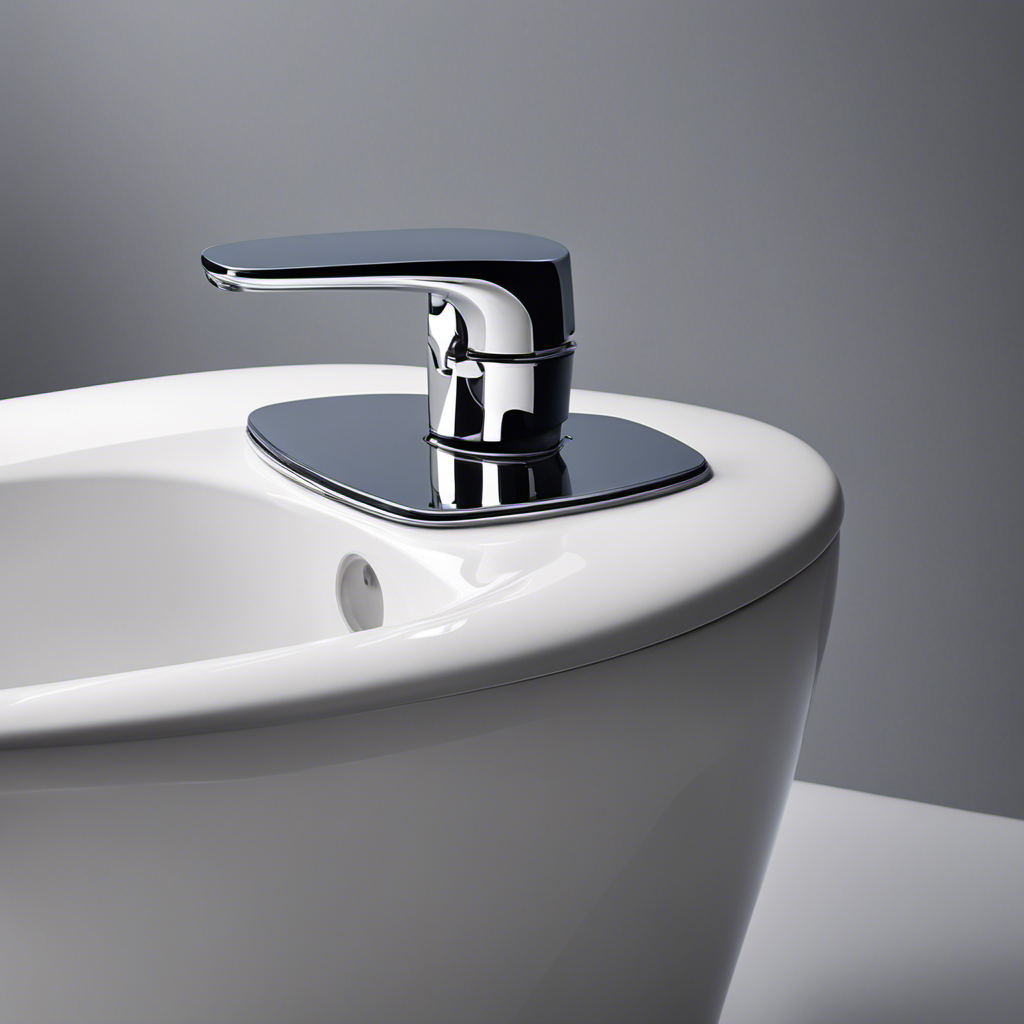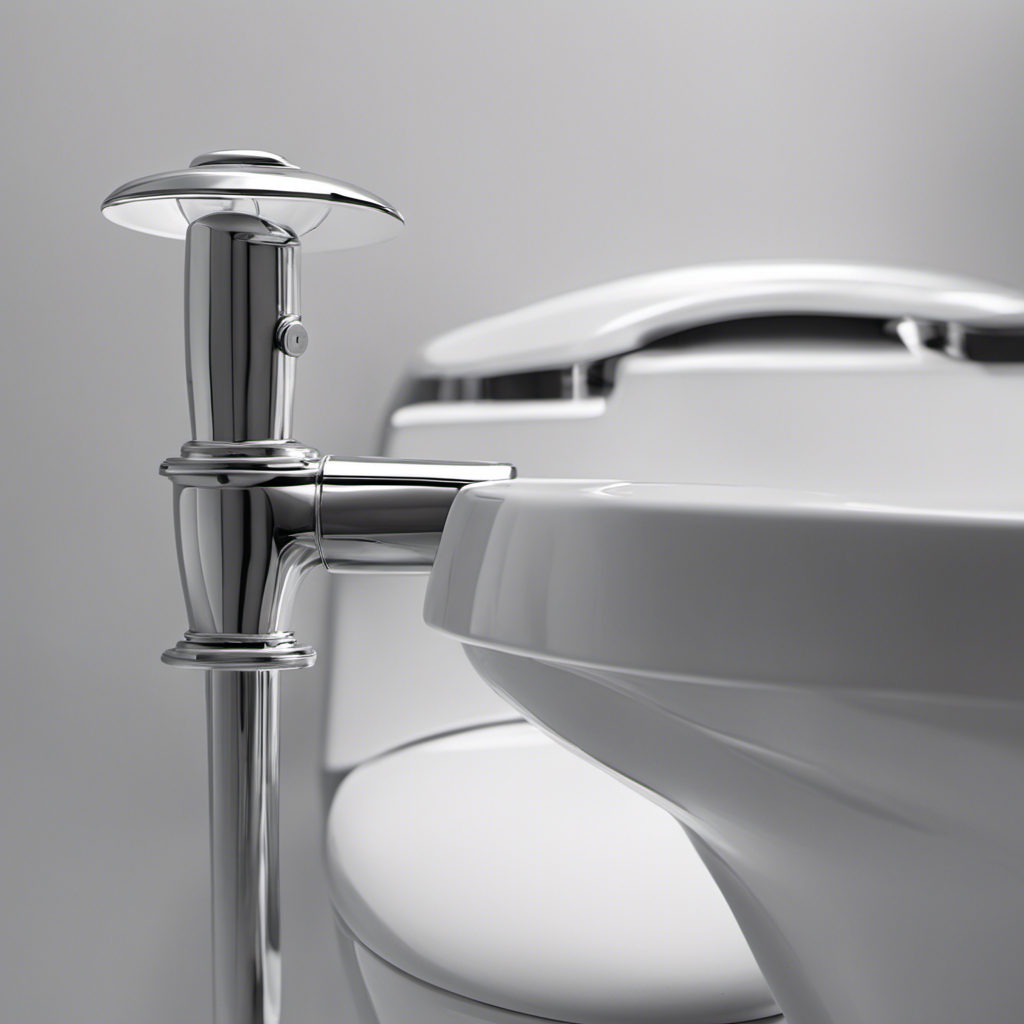So, you’ve found yourself with a toilet that just won’t stop running. Frustrating, isn’t it?
Well, fear not, because I’m here to guide you through the process of changing a toilet fill valve. With a few simple steps and the right tools, you’ll have that toilet working like a dream again in no time.
So let’s dive in and tackle this problem head-on. Trust me, you’ll feel a sense of accomplishment once you’ve mastered this DIY plumbing task.
Key Takeaways
- Check if the toilet is not filling up properly
- Look for signs of a fill valve issue, such as constant running or hissing sound
- Shut off the water supply before removing the old fill valve
- Install the new fill valve according to the manufacturer’s instructions and ensure all connections are securely tightened
Assessing the Problem
Before you can start changing the toilet fill valve, you need to assess the problem. Troubleshooting tips can help you identify signs of a faulty fill valve.
First, check if the toilet is not filling up properly or if it keeps running even after flushing. These are common indications of a fill valve issue.
Another sign is a constant hissing sound coming from the toilet tank.
Next, inspect the fill valve for any visible leaks or cracks. Also, check if the float arm is functioning correctly and if the water level in the tank is too high or too low.
If you notice any of these signs, it’s likely that the fill valve needs to be replaced. Assessing the problem accurately is crucial before proceeding with the replacement process.
Gathering the Necessary Tools
First, you’ll need to gather the necessary tools for the task at hand. Here is a list of the essential items you’ll need to successfully troubleshoot and maintain your toilet fill valve:
-
Adjustable wrench: This tool will help you loosen and tighten the nuts and bolts that secure the fill valve in place.
-
Screwdriver: You’ll need a screwdriver to remove any screws or fasteners that may be holding the fill valve in place.
-
Replacement fill valve: In case the current fill valve is damaged or malfunctioning, it’s important to have a new one on hand for replacement.
-
Cleaning supplies: Proper maintenance of the toilet fill valve involves regular cleaning. Make sure to have a bucket, sponge, and cleaning solution to keep the valve free from debris and buildup.
Shutting Off the Water Supply
To shut off the water supply, you’ll need to locate the shut-off valve and turn it clockwise until it is fully closed. This valve is typically located near the base of the toilet, either on the wall or floor. Shutting off the water supply is an important step in toilet repair and plumbing maintenance, as it prevents any water from flowing into the toilet tank while you work on it.
Below is a table that provides more information on the shut-off valve:
| Location | Description | How to Turn Off |
|---|---|---|
| Wall | The shut-off valve is attached to the water supply line that comes out of the wall. | Turn the valve handle clockwise until it stops. |
| Floor | The shut-off valve is located on the water supply line coming out of the floor. | Turn the valve handle clockwise until it stops. |
With the water supply shut off, you can now proceed to the next step of removing the old fill valve.
Removing the Old Fill Valve
In this section, I’ll be discussing the techniques for removing a fill valve and common issues that may arise during the process.
To begin, it’s important to turn off the water supply to the toilet and drain the tank completely before attempting to remove the valve.
Once the tank is empty, I’ll demonstrate how to disconnect the water supply line, unscrew the lock nut, and remove the old fill valve.
Additionally, I’ll address common problems such as a stuck or corroded valve and provide troubleshooting tips for a smooth removal process.
Valve Removal Techniques
When removing the toilet fill valve, you’ll need to start by shutting off the water supply. This is crucial to prevent any water from flowing while you work on the valve.
Once the water supply is turned off, follow these steps to remove the valve:
-
Disconnect the water supply line: Use pliers to loosen the nut connecting the water supply line to the fill valve. Once loose, carefully unscrew the nut and detach the line.
-
Remove the lock nut: Locate the lock nut that secures the fill valve to the toilet tank. Use an adjustable wrench to loosen and remove the nut.
-
Lift out the old valve: With the lock nut removed, you can now lift the old fill valve out of the toilet tank. Be careful not to damage any surrounding components.
-
Clean the tank: Before installing the new fill valve, take the opportunity to clean the inside of the toilet tank thoroughly. Remove any debris or mineral deposits that may have accumulated.
Common Valve Issues
One common issue with valves is a leaky connection, which can cause water to seep out and create a mess. Troubleshooting tips for a leaky valve include checking the connection between the valve and the water supply line. Ensure that the connection is tight and secure, and if necessary, use a wrench to tighten it further.
Another troubleshooting technique is to inspect the rubber gasket or O-ring inside the valve for any signs of wear or damage. If the gasket is cracked or worn out, it may need to be replaced.
DIY repair techniques for a leaky valve involve applying plumber’s tape to the threaded connections to create a tighter seal. Additionally, you can try cleaning the valve and the surrounding area to remove any debris that may be causing the leak.
By addressing these common valve issues, you can prevent further water damage and maintain the proper functioning of your toilet.
Now that we have covered troubleshooting tips for valve issues, let’s move on to the next step – installing the new fill valve.
Installing the New Fill Valve
To install the new fill valve, you’ll want to start by shutting off the water supply to the toilet. This is an essential step to ensure a safe and effective installation.
Here is a step-by-step guide on how to install the new fill valve:
-
Turn off the water supply: Locate the shut-off valve, usually located near the base of the toilet. Turn it clockwise until it is fully closed.
-
Flush the toilet: This will drain the tank and remove any remaining water.
-
Disconnect the old fill valve: Unscrew the water supply line from the bottom of the old fill valve. Then, unscrew the lock nut holding the fill valve in place. Remove the old fill valve from the tank.
-
Install the new fill valve: Place the new fill valve into the opening in the tank. Secure it by tightening the lock nut. Reattach the water supply line and ensure it is snug.
With the new fill valve installed, you can now move on to testing and adjusting it for optimal performance.
Testing and Adjusting the New Fill Valve
Now that the new fill valve has been installed, it’s time to test and adjust it to ensure that it is functioning properly.
Fill valve troubleshooting is an essential step in this process. To begin, I will turn on the water supply and observe the fill valve in action.
If the water level in the tank rises above the overflow tube, I will need to adjust the height of the fill valve. The proper fill valve height is crucial for the toilet to refill correctly and prevent any water wastage or overflow.
Frequently Asked Questions
How Do I Know if My Toilet Fill Valve Needs to Be Replaced?
If my toilet isn’t filling properly or the water keeps running, it may indicate a faulty fill valve. To diagnose, I check for water leaks, listen for strange noises, and observe if the tank is refilling excessively.
Can I Use Any Type of Fill Valve for My Toilet?
Yes, you can use different types of fill valves for your toilet. Each type has its pros and cons. It’s important to research and understand the different options to choose the one that suits your needs best.
Do I Need to Call a Professional Plumber to Replace a Toilet Fill Valve?
I have considered the pros and cons of hiring a professional plumber for toilet repair. Is it worth it to replace a toilet fill valve on your own? Here is my answer.
How Long Does It Take to Replace a Toilet Fill Valve?
Replacing a toilet fill valve doesn’t have to be a lengthy process. With some quick tips and a smooth approach, you can efficiently replace a toilet fill valve and have your toilet functioning properly in no time.
Can I Replace the Fill Valve Without Turning off the Water Supply to the Entire House?
Yes, you can replace the fill valve without turning off the water supply. To do so efficiently, follow these steps: 1) Shut off the toilet’s water supply valve. 2) Drain the tank. 3) Remove the old fill valve. 4) Install the new fill valve. 5) Turn the water supply back on.
Conclusion
In conclusion, the process of changing a toilet fill valve can be likened to the ebb and flow of life’s challenges. Just as the old fill valve is removed, we must let go of the things that no longer serve us.
Installing the new fill valve symbolizes embracing new opportunities and growth. Through testing and adjusting, we ensure that everything is in perfect harmony, much like finding balance in our own lives.
Remember, with precision and attention to detail, we can overcome any plumbing obstacle that comes our way.










